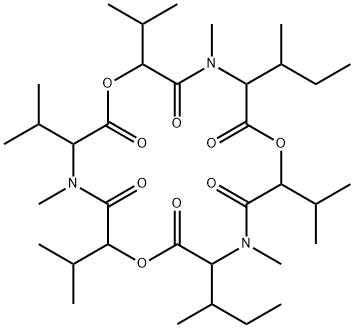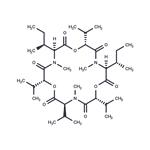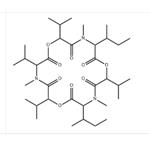Uses
Enniatin A1 is a mycotoxin capable of creating negative CNS effects due to their ability to cross the blod-brain barrier. Secondary metabolite of microbes, it is associated with mold, moisture damage and asthma development.
Uses
Enniatins are a family of depsipeptide ionophores produced by several Fusarium species. Recently, the effects of the enniatins on acyl-CoA cholesterol transferase, transporters and the selectivity of their antitumor action have received more focus. Enniatin A1 is one of four major analogues of the enniatin complex .
Uses
Enniatins are a family of depsipeptide ionophores, produced several Fusarium species. More recently, the effects of the ennitins on acyl-CoA cholesterol transferase, transporters and the selectivity of their antitumour action have received more focus. Enniatin A1 is one of four major analogues of the enniatin complex and has previously not been available for investigation.
Definition
ChEBI: An enniatin obtained from formal cyclocondensation of one N-[(2R)-2-hydroxy-3-methylbutanoyl]-N-methyl-L-valine and two N-[(2R)-2-hydroxy-3-methylbu
anoyl]-N-methyl-L-isoleucine units.
Biochem/physiol Actions
Enniatins are a group of cyclohexadepsipeptide mycotoxins produced by Gnomonia errabuda and several Fusaria species, with phytotoxic, antibiotic, and insecticidal activities. Enniatins function as ionophors by their incorporation into the cellular membrane to form dimeric structures that transport monovalent ions across the membrane (especially the mitochondrial membranes) affecting oxidative phosphorylation uncoupling. It has been demonstrated that enniatins have a cytotoxic effect on human cancer cells. Furthermore, incubation of H4IIE hepatoma cells with enniatins strongly diminished phosphorylation of the ERK (p44/p42).



